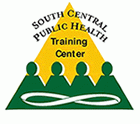
Introduction to Epidemiology
Course Description:
The course will introduce key concepts in epidemiology that are needed for public health practice. These concepts include the measures of disease frequency, principles and techniques of surveillance, outbreak investigation, measures of association used in epidemiologic studies, causal reasoning, confounding, bias, and epidemiologic study design.
Target Audience
Academic Faculty/Staff, Federal Government Employees, State Government Employees, Local Government Employees, Non-Government Employees and Students
Learning Objectives
- To discuss the difference between a rate, ratio and proportion
- To discuss the difference between crude, specific and adjusted rates
- To introduce the concept of confounding
- To discuss the difference between incidence and prevalence
- To discuss different methods of depicting data
- To discuss the elements of a valid statistical association
- To examine some descriptive data and discuss interpretations
- To discuss the term “cohort effect”
- To discuss methods for conducting outbreak investigation
- To discuss descriptive study designs:
- cross-sectional
- correlational
- To state the hypothesis of a study
- To calculate and interpret an odds ratio
- To calculate and interpret a relative risk
- To calculate and interpret a confidence interval
- To discuss the difference between statistical and clinical significance
- To discuss the terms precision and validity
- To describe the types of bias that can occur
- To discuss methods for preventing bias in study design
- To discuss the kappa statistics
- To discuss predictive values
- To discuss the terms: predictor, outcome, confounder and effect modifier
- To an analysis to determine if confounding exists
- To discuss the difference between confounder and effect modifier
- To discuss the design of community trials
- To discuss the design of clinical trials
- To discuss design issues of the cohort study
- To discuss design issues of the case-control study
- To compare and contrast the two designs
- To discuss additional methods of minimizing confounding
- To discuss the difference between impact and efficiency evaluation
- To discuss the difference between process and outcome evaluation
- To discuss formative and process evaluation
- To describe examples of evaluation
Instructor:
Patricia Kissinger, PhD
Epidemiologist/Associate Professor
Department of Epidemiology
Tulane University School of Public Health and Tropical Medicine
Education:
BSN, 1981, Marquette University
MPH, 1987, Tulane University School of Public Health and Tropical Medicine
PhD, 1992, Tulane University School of Public Health and Tropical Medicine
Research Interests:
STDs/HIV and women’s reproductive health
Available Credit
- 7.00 Participation/CETulane Professional and Continuing Education (PaCE) awards 7.00 hour(s) of credit for completing Introduction to Epidemiology
Price
Required Hardware/software
System Settings
This course is designed to work most effectively if your computer and internet connection meet certain minimal requirements. This course can be accessed using a Windows 10 PC or a Mac with High Sierra1, Mojave, or Catalina. Pop-up blockers should be disabled when viewing the course. Internet Explorer 11 (for Windows 10), or the current version of Google Chrome, Mozilla Firefox, or Apple Safari (for Windows 10 and or Mac) is required. Many of our courses require Java and JavaScript enabled.
Links to External Websites
Links to websites outside this course will open in a new window or tab. Some browsers may minimize the course window. If this occurs, maximize the course window to return to the course.
Adobe Acrobat Reader (for desktops and laptops)
Adobe Acrobat Reader is required to access some documents in this course. If you need to download a free copy of Acrobat Reader, click here.
Internet Connection Speed
A minimum download speed of 1.5 Mbps is recommended for an optimal experience, which is commonly the speed associated with a basic DSL or a cellular/satellite connection. A faster connection, such as cable or fiber service, with further enhance your online experience. A Wi-Fi connection is generally acceptable, but it is dependent upon one of the two services mentioned above. You can check your internet connection speed at http://www.speedtest.net/.

 Facebook
Facebook X
X LinkedIn
LinkedIn Forward
Forward